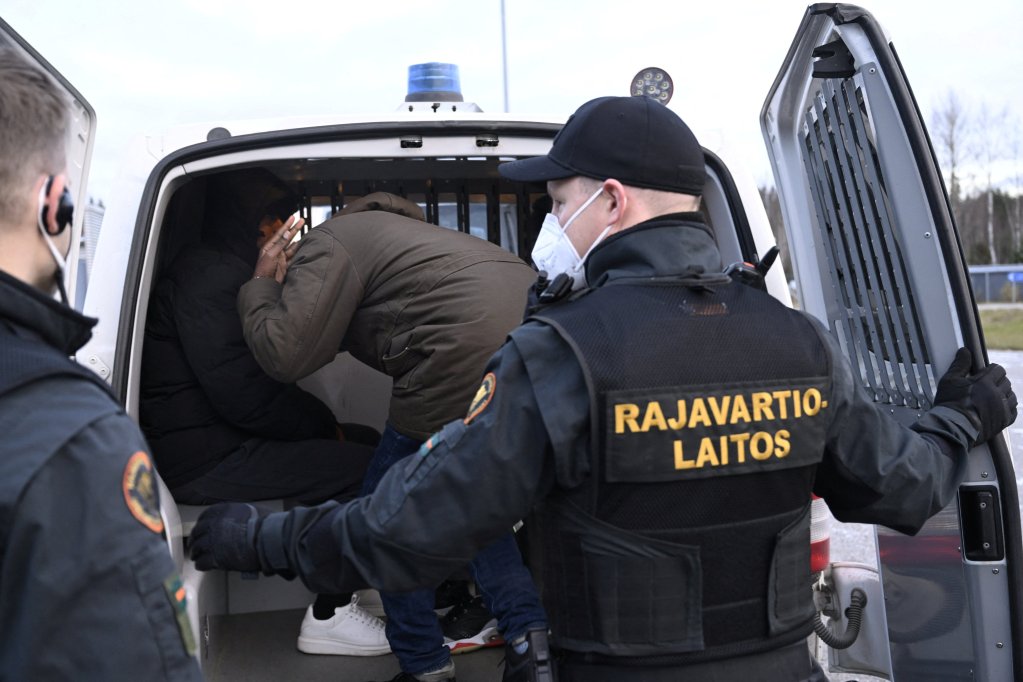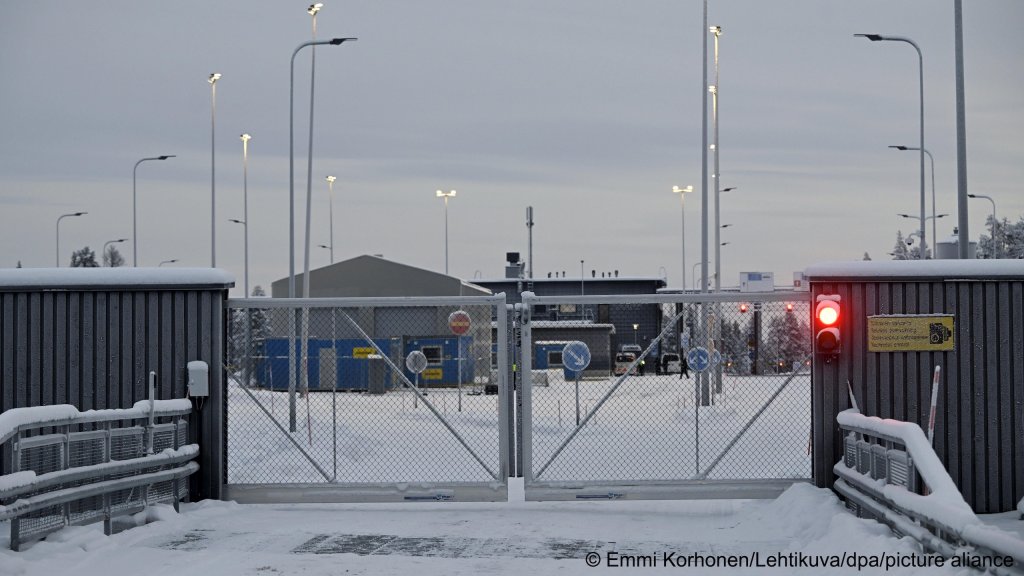As the Finnish government promises to get tougher on migrants arriving at its eastern border, some are taking their chances and crossing 'illegally' through the forests from Russia.
"My name is Rakan. I'm from Syria, from the city of Ain al-Arab. I'm 20 years old." Rakan Ismael is on a video call with InfoMigrants from a reception center near Finland's eastern border. His mother tongue is Kurdish, but he is doing his best to speak Arabic.
From the Joutseno center in Lappeenranta, Rakan explains how, almost two months ago, he was arrested with three other young Syrians in the town of Parikkala, close to the Russian border, on suspicion of trying to enter the country illegally.
They had tried to cross into Finland at a checkpoint, not knowing that it would be closed. At the border, he had seen saw carloads of others waiting to cross: Russians, Iraqis, Sudanese and Iranians, as well as Syrians.

Over the past decade, hundreds of thousands of people have fled Kobani, where Rakan's family is from. First the threat was from the jihadist terrorist group ISIL and its allies, now it is from Turkish artillery and drone attacks. "Turkish planes attack every day, (killing) 10 to 20 martyrs," Rakan said. "If there wasn’t a war in our country, we wouldn’t have come here. We wouldn’t have left."
'They told us to go back'
For the sake of his wife and children, Rakan escaped to Russia, using a student visa he managed to get in Lebanon. From there he tried to enter Estonia and Latvia, but was violently pushed back, Latvian authorities beating him and breaking his phone, he says.
Twice, he tried to cross the Polish border from Belarus, spending days in the forest with nothing to eat or drink.
The Belarusian army was hitting us and telling us to go back to Poland, and the Polish army was hitting us and telling us to go back to Minsk
"The Belarusian army was hitting us and telling us to go back to Poland, and the Polish army was hitting us and telling us to go back to Minsk," he said. "We were like a ball, everyone throwing us to the other."
After that, smugglers "helped" Rakan and his friends to reach the Finnish border. He can't say who the smugglers were. They used different names, and spoke a mixture of Arabic, Russian and Kurdish. In the end, they deceived and mistreated the migrants.
"We ...reached the forest, and (the smuggler) said 'there is no legal crossing point here'. And he said 'get off here'... He had a gun."
"They stole the money we had and told us to go through the forest. We had no option. If we didn’t, that would mean returning to Russia, or deportation to Syria and (being drafted) into the Syrian army.”
It was January 10 when Rakan and his friends made it into Finland. They knocked on the door of an elderly woman’s house and asked her to call the police.
When he spoke to InfoMigrants, Finland was in the grip of one of the longest, coldest winters in decades. Rakan could not name the town he was in, and he had no idea what was going to happen to him.
A 'threat to security'
Finland first closed all crossings on its eastern border with Russia late last year, after the number of undocumented migrants trying to enter the country started to rise. Between August and December last year, more than 1,300 migrants entered Finland from Russia, 900 of them in November alone, according to the Finnish border guard. In comparison, the number before August averaged one person a day.

The border closures seem not to have stopped migrants from making the journey to the Russian side. Some, like Rakan, believed that they would be able to pass through the official border posts. He said there were "many" people waiting at the border – including Syrians like him.
InfoMigrants has not been able to confirm exactly how many migrants are gathered at checkpoints at the Russia-Finland border. Jussi Laine, a professor at the University of Eastern Finland, recently told the French broadcaster RFI: "At the moment, there are only a few migrants waiting to pass to the Finnish side." But the interior minister, Mari Rantanen, announced in February that there were "thousands of (migrants) on the Russian side ... waiting to get to Finland." She told a news conference that the situation represented "a threat to national security."
Also read: Stuck at the Russian-Finnish border: 'I feel that I will die here, in the cold'

Finland accuses Russia of orchestrating the migrant situation in retaliation for Finland’s decision to join NATO, which followed Russia’s full-scale invasion of Ukraine in February 2022. "If Russia's goal was to destabilize and shake up the Finns, in this case they succeeded," Professor Laine said.
In response the Finnish interior ministry has vowed to draft new laws to strengthen border security and "effectively combat any attempts to put pressure on Finland in the form of instrumentalized migration," though it has also promised that the amended legislation will be used as a last resort in preparing for "the most serious situations."
Also read: How asylum seekers pay to cross Russian-Finnish border
A 'U-turn on immigration'
In fact, the new government had already promised to introduce tougher immigration policies, well before the number of migrants arriving at the eastern border began to rise.
Rantanen, who is a member of the far-right Finns Party, said last June she would "perform a U-turn" on immigration and refugee policy. "We will tighten all the conditions to come to Finland, to stay here and to be in Finland," she told the public broadcaster Yle.
Last week, the minister called for an urgent reform of Europe's asylum and immigration policies and said she supports the outsourcing of asylum processing to third countries, along the lines of the UK-Rwanda or Italy-Albania models.
In a column on the ministry's website, Rantanen also proposed the suspension of processing of individual asylum applications in a situation where the sovereignty of a state is compromised.
In Finland the asylum system is being used by "economic migrants" who are not in need of international protection, she said. "This puts unnecessary strain on the asylum system and slows down access to protection for those in need."
For now, migrants are still entitled to apply for protection in Finland and have their application assessed individually – regardless of how they entered the country. But when Rakan spoke to InfoMigrants, he had received no news about his asylum claim and had yet to have an interview.
Whatever his grounds for applying for protection, if he is successful, his wish is that his children will have the opportunity to study in Finland.
"I traveled for my children and their future," he said. "I can’t read or write. I want a better future for them."
Daline Salahie and Rama Jarmakani contributed to this report.
